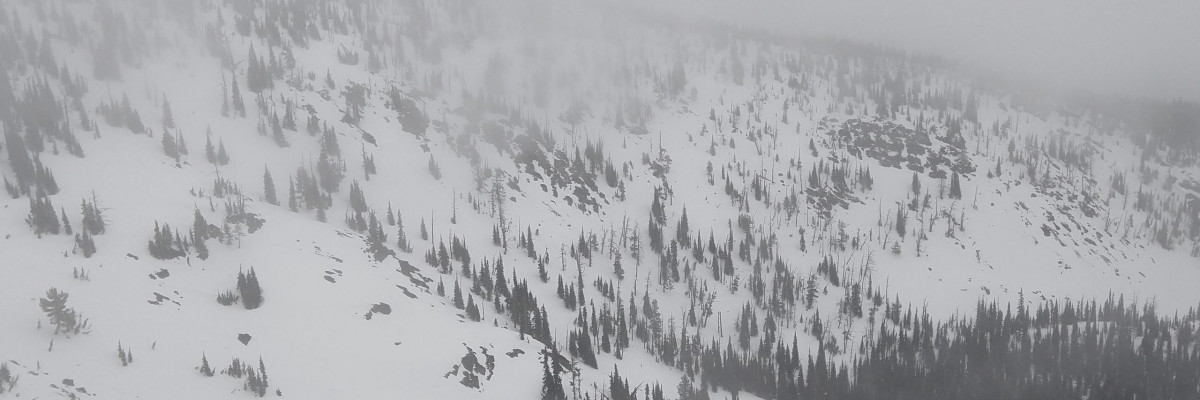The avalanche danger in the west central Montana backcountry is Low.
Good Morning. This is Jeff Carty with the West Central Montana Avalanche Center advisory on Saturday, March 20, 2021. This advisory is sponsored by REI. This advisory does not apply to operating ski areas and expires at midnight tonight. The USDA Forest Service is solely responsible for its content.
Snowpack and weather
After a very warm week that culminated with all elevations remaining above freezing on Thursday night, we are back to cooler temperatures. Mountain temperatures dipped to 20º last night and are expected to reach 38º today. Cloud cover should keep solar warming to a minimum, but the sun may come out and affect southern aspects. 0.1″-0.2″ SWE fell in the past 24 hrs, snow accumulation was negligible due to warm temperatures. Elevations below 5500′ received rain. 1″-2″ of snow is forecast today, and up to 3″ tonight. Light winds, with strong gusts, will be out of the northwest.
All elevations and aspects were affected by above freezing temperatures yesterday. The dry snow that had been preserved on north faces is gone and was moist to a foot down in the snowpack. Pockets of dry snow may be preserved above 8000′ feet.
Despite the week of warmth, we were able to find faceted layers at the base of the snowpack on the north, They were rounding and gaining strength, but it is worth noting that they are out there in isolated locations. They would be unlikely to trigger in the location found yesterday given the depth and the density of the overlying slab. Isolated pockets of facets may still exist in other locations. There remains a very slight possibility that just the right trigger point or cornice fall could trigger a persistent slab.
All other aspects but north were saturated to ground yesterday. Some spots were approaching isothermal, with noncohesive snow below a deteriorating crust. It’s conditions such as this that can lead to large wet spring avalanches. However, cold temperatures last night have locked the snowpack in place with a stout supportive crust. The cold nights and mild days in the forecast should keep the whole snowpack refrozen. Avalanche hazard will remain low as long as the snowpack remains solidly frozen, or unless enough snow accumulates to create new problems.
Sun, rising temperatures, or rain could cause a rise in hazard. If the snowpack is saturated more than a few inches below the surface, if you sink into softened snow to mid boot, or if you are punching through the crust into wet snow, it’s time to go. Any rain on snow should be cause for concern.
The minimal amount of snow forecast for today is unlikely to create any instabilities. By tomorrow there may be enough, combined with wind, to create small wind slabs.
Cornices and glide cracks will be with us for the rest of the season. These are two unpredictable avalanche problems. The cornices left after the warmth are a hazard that will increase with warmth, sun, or rain. Give them a wide berth above and stay out from underneath. Glide cracks will have opened and accelerated with the warmth. While slowed, they are still opening despite cold temperatures as the ground beneath the snowpack remains unfrozen. They can fail unexpectedly, creating full-depth avalanches. Stay off slopes where they are present.
The bottom line
The snowpack has refrozen, and the hazard is low. Warming or rain may cause the hazard to rise. If you are sinking into moist snow or breaking through the supportable crust, it is time to head home. Reassess conditions throughout the day and stay alert for signs of instability. Look for red flags. Carry a beacon, shovel, and probe.
Public Observations
Thank you to everyone who has taken the time to send in a public observation. Please keep sharing what you find and see while out in the backcountry. You can now text us your observations to (406) 219-5566 when you don’t have time to fill out the observations page.
Ski and ride safe.
























